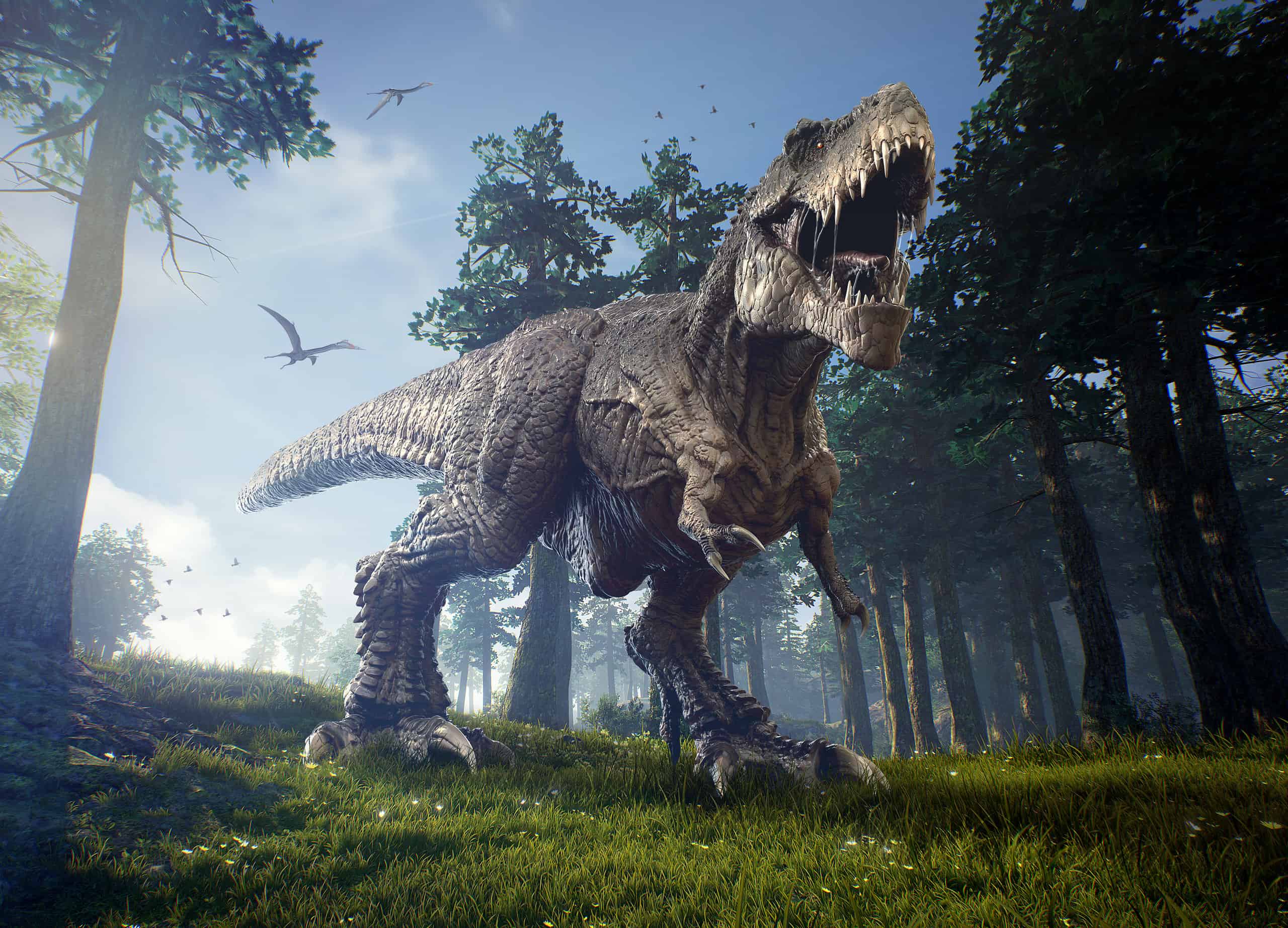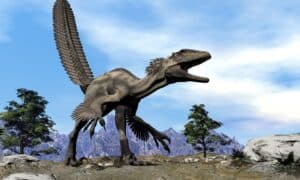If you’re familiar with the Jurassic Park movie series, you know the Tyrannosaurus Rex. Scientists classified the T-rex as a theropod. Theropods are a group of meat-eating dinosaurs with two small arms and huge feet. Paleontologists believe that modern birds evolved from the smaller theropod dinosaurs.
Furthermore, most meat-eating dinosaurs had sharp claws and teeth to kill their prey. Some of them were also equipped with strong jaws to crush their prey. With that terrifying imagery, can you imagine what some of these meat-eating dinosaurs were capable of doing? Discover in this article nine more small armed meat-eaters like the T-rex.
Tarbosaurus bataar
Tarbosaurus bataar was a huge meat-eating theropod dinosaur. It was almost as large as the tyrannosaurus rex. The genus name tarbosaurus means “alarming lizard in Greek. It lived during the Cretaceous period, about 72-68 million years ago. The habitat of the tarbosaurus bataar was a humid floodplain crisscrossed by rivers.
Furthermore, the tarbosaurus had powerful jaws and a large head like the T-rex. It also had small arms compared to other tyrannosaurs with its body size. The smaller arms are typical body characteristics of more prominent, later tyrannosaurs. Also, the smaller arms would have allowed it to maintain an excellent running balance. For a two-legged animal with a huge head, this may have been beneficial.
In 1946, the first tarbosaurus fossil was discovered in Mongolia. The tarbosaurus was a meat-eating dinosaur, hunting prey, and feeding on carrion.
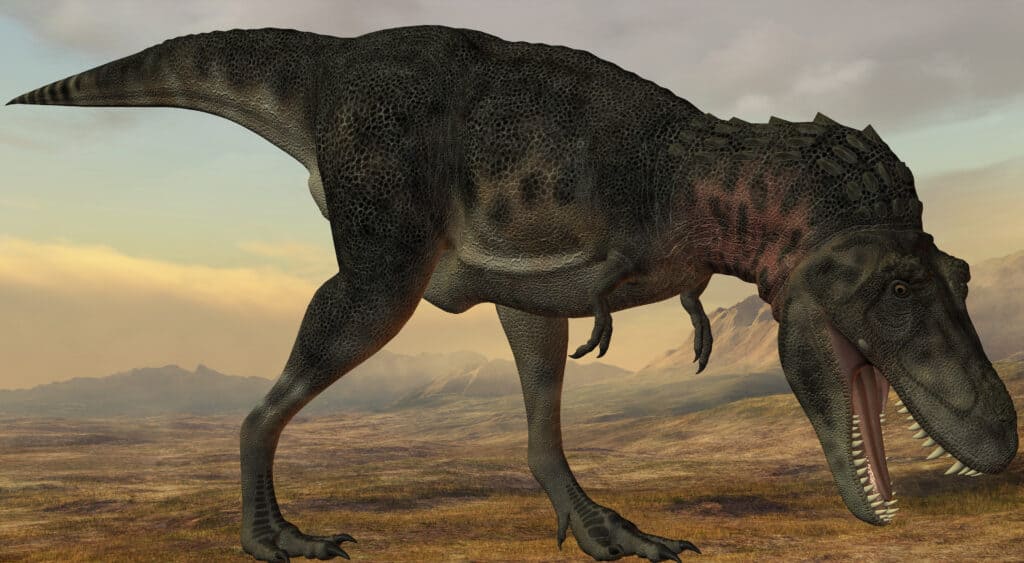
©Andreas Meyer/Shutterstock.com
Velociraptors
Velociraptors are small meat-eating dinosaurs. They lived around 80 million years ago during the cretaceous period. The velociraptors were about 2 feet tall, 6 feet long, and weighed about 45 lbs. The egg-shaped head of the velociraptors was about 9 inches long. They also had a unique body appearance with an S-curved neck that went from their body to the head.
Similarly, the fossils of the raptors were first discovered in Mongolia in 1924. Other fossils were also found in China and Russia. Scientists believe that velociraptors preferred to live in desert-like habitats. Also, velociraptors have skinny legs. Paleontologists believe their thin legs are what allow them to run very fast.
Furthermore, velociraptors tended to eat herbivorous dinosaurs like the protoceratops. Scientists believe they can run up to 40mph in short distances. This speed would make it easy for them to catch their prey. Also, velociraptors have 4-inch sharp claws to tear their prey apart and 60 razor-sharp teeth to bite into the prey.
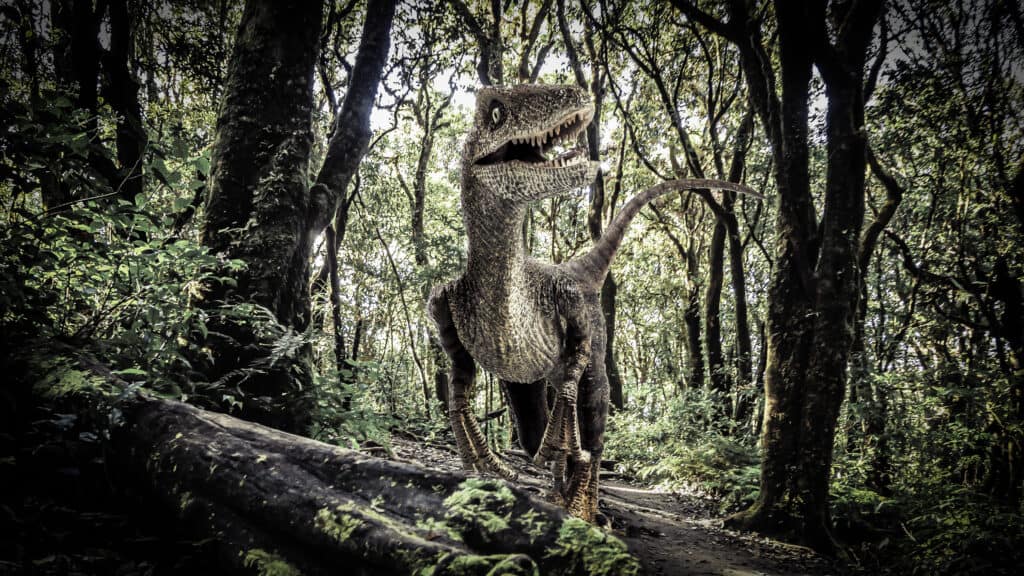
The fossils of the raptors were first discovered in Mongolia in 1924.
©kamomeen/Shutterstock.com
Acrocanthosaurus
Acrocanthosaurus means ” high-spined lizard.” This enormous theropod dinosaur roamed North America over 155 million years ago during the early Cretaceous period. The first Acrocanthosaurus remains were discovered in Oklahoma in 1940. More fossils have been found over the years in Arizona, Texas, and Utah. Also, the Acrocanthosaurus weighs up to 6.2 metric tonnes and measure up to 11 meters in length.
Furthermore, the Acrocanthosaurus was a huge carnivorous dinosaur that fed on smaller herbivorous dinosaurs like the Tenontosaurus. Also, the Acrocanthosaurus used its high spine to make itself look more prominent when there was danger. The high-spine feature was probably also to regulate its body temperature.
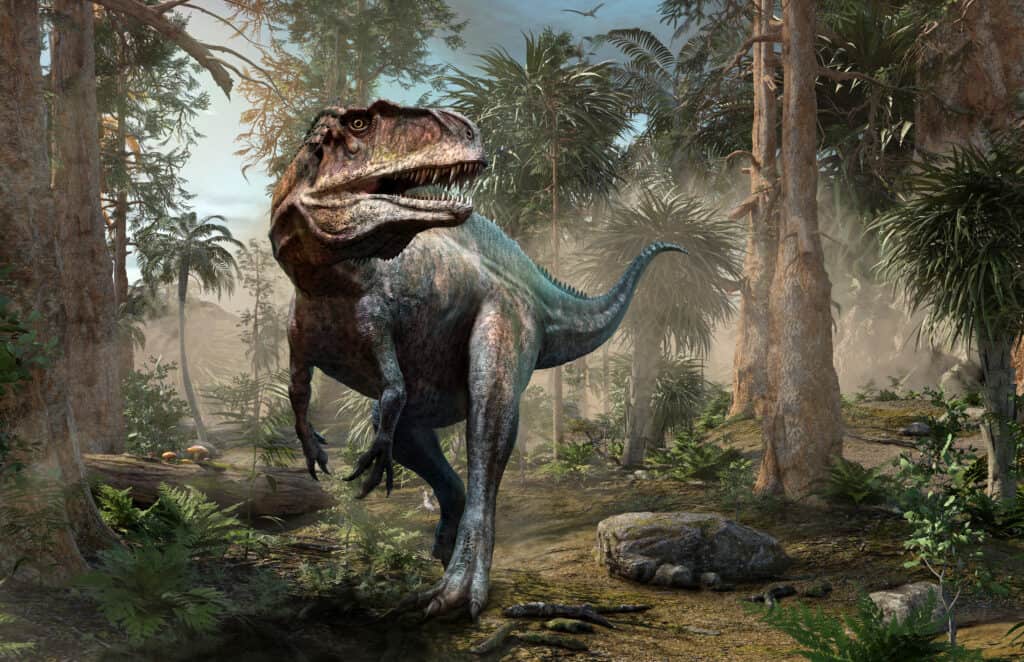
The first Acrocanthosaurus remains were discovered in Oklahoma in 1940.
©Warpaint/Shutterstock.com
Giganotosaurus
Giganotosaurus is one of the largest carnivorous dinosaurs in history. It lived during the Cretaceous period about 97 million years ago. Also, recent findings estimate that the Giganotosaurus was about 13.2 meters long. Findings also estimate it weighed about 15 tonnes. Also, Rubén Dario Carolini discovered the giganotosaurus in southern Argentina. He made this discovery in 1993 in the Neuqéun Province of Patagonia.
Similarly, the Giganotosaurus was a bipedal dinosaur, meaning it walked on two legs. The thin, pointed tail of the Giganotosaurus would have made it very agile. Also, the tail would have allowed it to make sharp turns while running.
Furthermore, researchers believe the Giganotosaurus fed on giant herbivorous dinosaurs. The huge size of the giganotosaurus means it had no natural predators. It would have been capable of killing live prey. Also, the giganotosaurus had serrated flat teeth that would have helped it slice through its prey quickly.
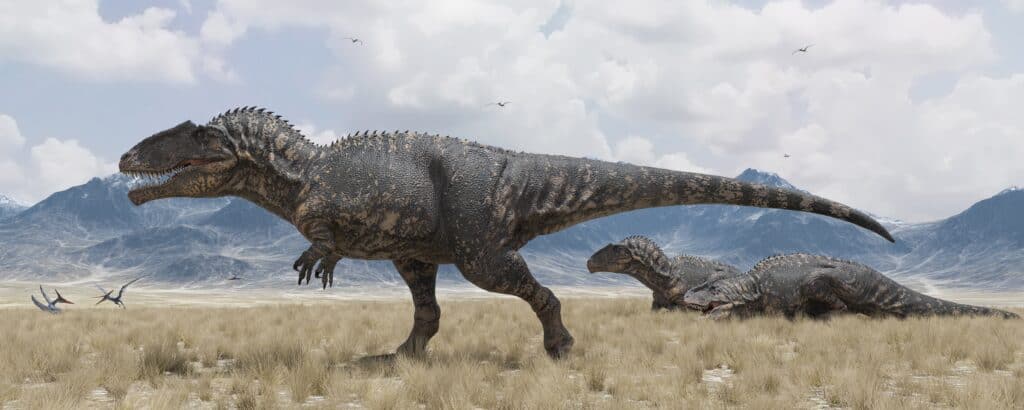
The first Giganotosaurus fossil was discovered in 1939 in Patagonia.
©Herschel Hoffmeyer/Shutterstock.com
Allosaurus
Allosaurus was a giant meat-eating dinosaur. It lived around 155-140 million years ago, during the late Jurassic period. The name Allosaurus means ” other lizard.” Allosaurus had a deep, narrow body and short, muscular necks. It was the largest carnivorous dinosaur during its time. Scientists estimate the allosaurus to be around 28 ft long and weigh about 1.4-2 metric tonnes.
Furthermore, the allosaurus fossil was first found in the mid-19th century in Colorado. The allosaurus was a carnivorous dinosaur and probably fed on other Jurassic dinosaurs. Giant sauropods, like the Barosaurus, lived during the late Jurassic period. The allosaurus might have fed on this huge, long-necked dinosaur.
Additionally, the allosaurus had three bent and pointed claws at the end of each arm. These claws measured up to 6 inches. The jaws of the allosaurus contained about 70 serrated teeth. These teeth were pointed backward and able to tear through flesh. Also, the jaws of the allosaurus are not strong enough to crush bones. Scientists believe their teeth and jaws are used to slice up and rip off flesh.
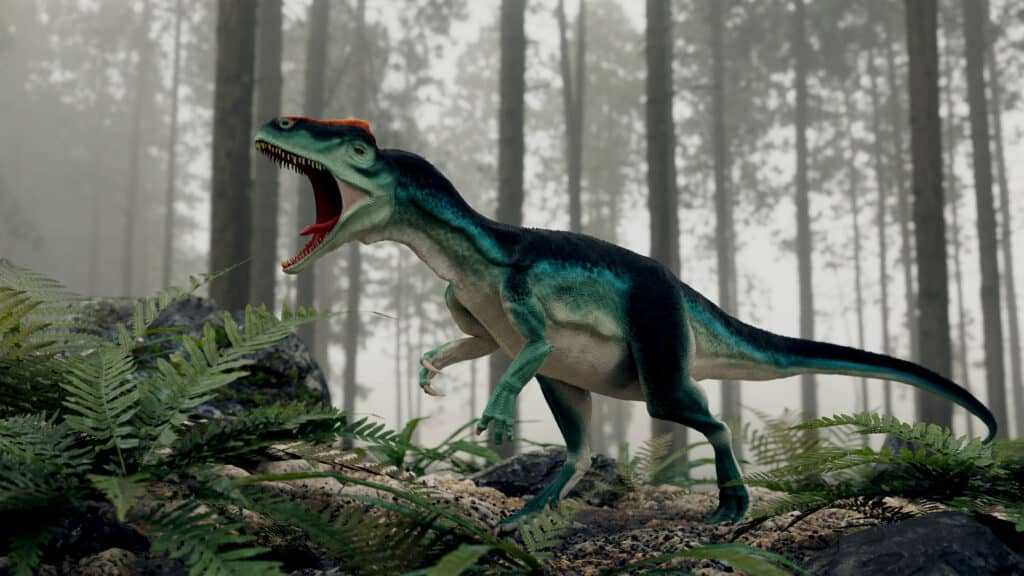
The Allosaurus fossil was first found in the mid-19th century in Colorado
©Lord Beard/Shutterstock.com
Spinosaurus
Spinosaurus was the most giant carnivorous theropod dinosaur. The name “spinosaurus” comes from the enormous spines protruding from their back. Spinosaurus lived around 97 million years ago, in the middle Cretaceous period. Scientists believe spinosaurus spent most of their time in the water and were the first dinosaurs to swim.
Furthermore, scientists have not found many fossils of the spinosaurus. The few remains found have always been incomplete. Richard Markgraf found the first spinosaurus fossil in 1912. The fossil was discovered in the Bahariya formation in western Egypt.
Similarly, researchers suggest that the spinosaurus is about 50 feet long. They also estimate that it weighed about 8 tonnes. Spinosaurus had rows of non-serrated teeth and giant heads. Their non-serrated teeth allowed them to tear their prey apart. Also, the spinosaurus is thought to have fed mainly on fish. Giant sharks, lungfish, and sawfish living in the dinosaur’s river system could have become prey.
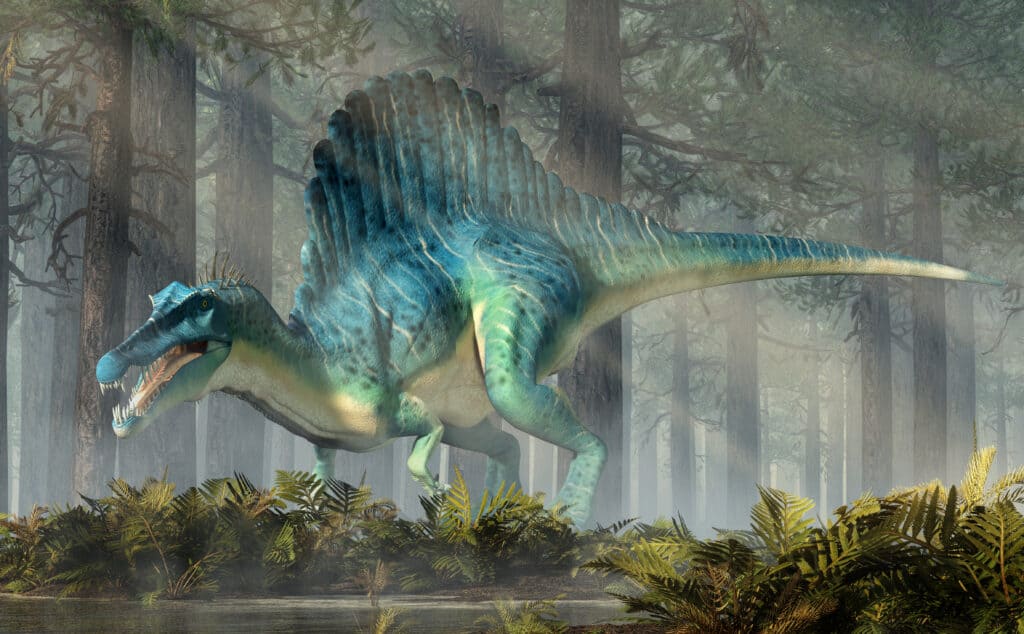
. The first Spinosaurus fossil was discovered in 1912 in Egypt.
©Daniel Eskridge/Shutterstock.com
Alioramus altai
Alioramus altai is a small meat-eating dinosaur in the tyrannosauridae family. It lived during the late Cretaceous period, about 72-66 million years ago. In 2001, paleontologists discovered the fossils of the Alioramus altai in Mongolia. Also, scientists believe the Alioramus shared its wet and humid habitat with the Tarbosaurus.
Although Alioramus altai was similar in anatomy to the Tarbosaurus, it was half the size. It probably weighed around 700 kilograms. The Alioramus had a long, slender snout. It differs from other Tyrannosaurs in ecological habitat and body plan. Also, it had horns projecting from the middle of its skull.
Furthermore, the alioramus didn’t have strong jaws like the bigger tyrannosaurids. It had a long, slender snout with over 70 shallow-rooted teeth for tearing prey apart. Also, alioramus altai has more teeth than any other tyrannosaur. It probably relied on agility and speed to hunt since it would have competed with the tarbosaurus for food.
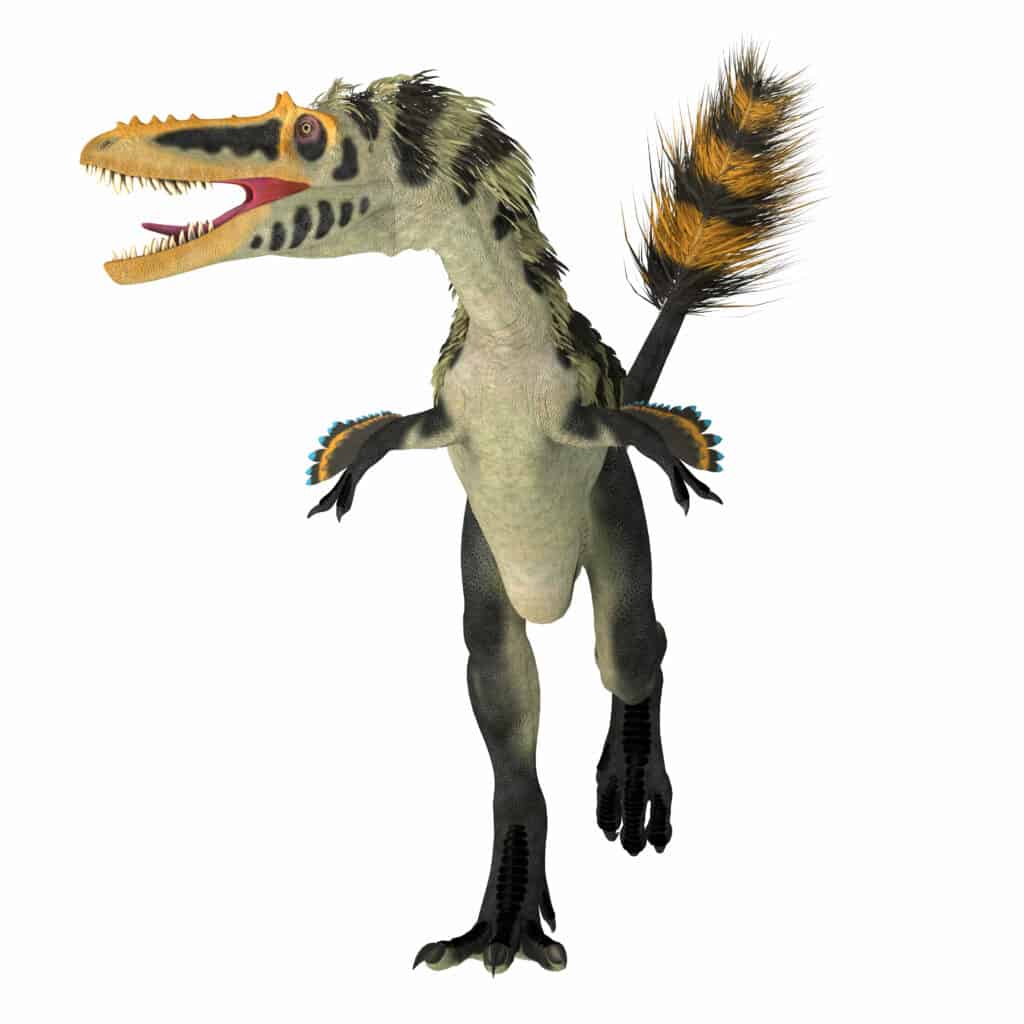
The fossils of the Alioramus altai were first discovered in 2001 in Mongolia.
©Catmando/Shutterstock.com
Albertosaurus sarcophagus
Albertosaurus was the apex predator of the late Cretaceous period in Canada. It was also the most common giant carnivorous dinosaur found in Alberta, Canada. The name “albertosaurus ” means “lizard from Alberta” in Greek. The name is in honor of Alberta, Canada, where many of the albertosaurus fossils were found.
Moreover, the albertosaurus lived in a heavily vegetated semi-tropical environment. It was alive around 70-74 million years ago, during the late Cretaceous period in Canada. In 1884, the first albertosaurus fossil was found in Alberta, Canada. Albertosaurus might be about half the size of the tyrannosaurs, but it was still fierce. It weighed up to 2 metric tonnes and was about 30 feet long.
Furthermore, this small-armed meat-eater was lighter and shorter than the Tyrannosaurus Rex. The albertosaurus had a short tail that enabled it to turn sharply and provided balance. Also, the body size of the albertosaurus suggests that they were good ambush hunters. Its strong hind legs would have allowed it to chase prey at very high speeds(probably 30km/h).
Additionally, recovered fossils suggest that the albertosaurus hunted in packs. They would have relied on their strength to prey on big herbivorous dinosaurs.

In 1884, the first albertosaurus fossil was found in Alberta, Canada.
©Catmando/Shutterstock.com
Daspletosaurus torosus
Daspletosaurus torosus was a powerful and stocky predator during its time. It existed 10 million years before the T-rex. The Daspletosaurus was a ferocious beast that grew up to nine meters long. They had the largest teeth of any tyrannosaurids, even larger than the T-rex ones. Each tooth was saw-edged, dagger-sharp, and curved. This theropod lived during the late Cretaceous period, between 77 to 74 million years ago.
Furthermore, the Daspletosaurus was an apex predator at the top of its food chain. It most likely fed on giant dinosaurs like the Hypacrosaurus. With its formidable size, jaws, and teeth, the Daspletosaurus was capable of quickly killing even the most enormous herbivorous dinosaurs. Although the Daspletosaurus was very large, it wasn’t the largest tyrannosaurid. Daspletosaurus could grow to around 9 meters and weigh between 1.8 to 3.8 metric tonnes.
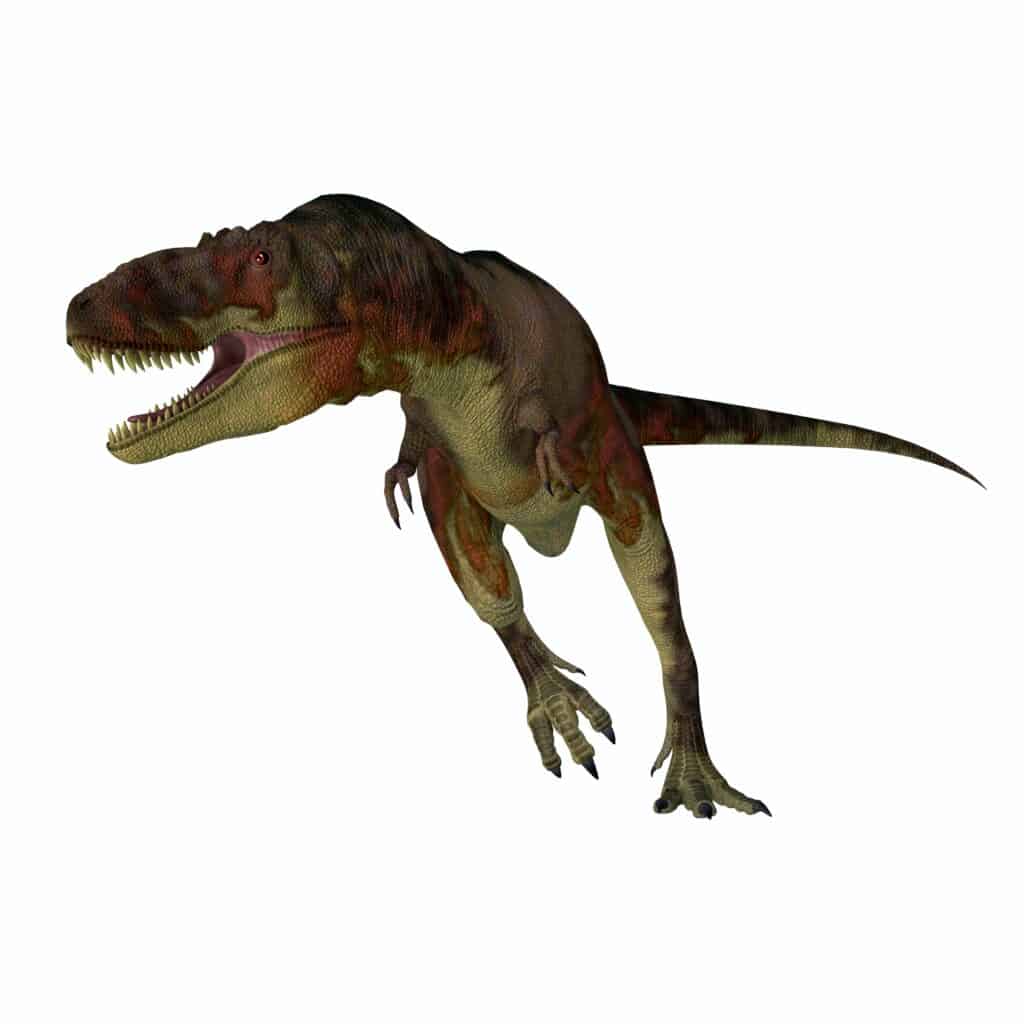
Daspletosaurus torosus was a powerful and stocky predator that existed 10 million years before the T-Rex.
©Catmando/Shutterstock.com
Summary
The Tyrannosaurus Rex is a formidable predator. With a 40ft length and 9 tonnes weight, it’s no surprise this dinosaur dominated its territory. People understand the T-rex as the king of dinosaurs, but this theropod isn’t the only small armed meat-eating dinosaur. This article has outlined several other small armed meat-eaters dominating their periods.
Thankfully, these massive beasts have gone extinct. Imagine what it would be like living with the Spinosaurus today.
Up next; Here are some other carnivorous dinosaurs you might want to explore per each article:
Thank you for reading! Have some feedback for us? Contact the AZ Animals editorial team.

